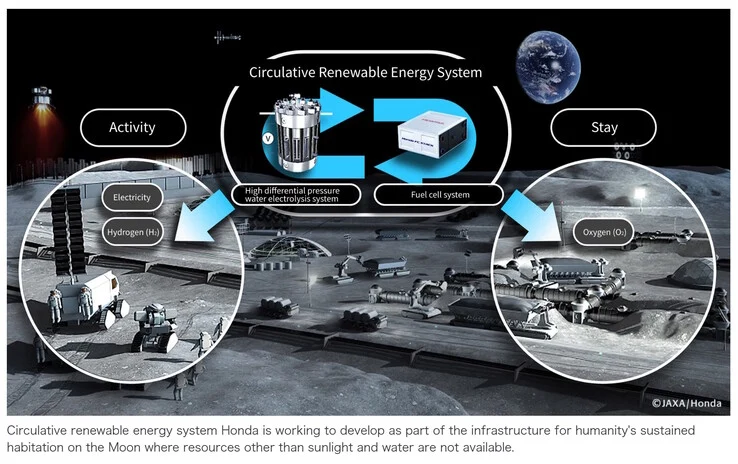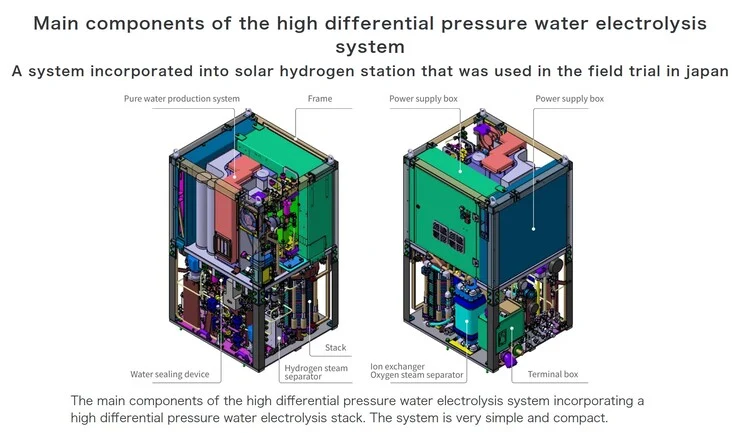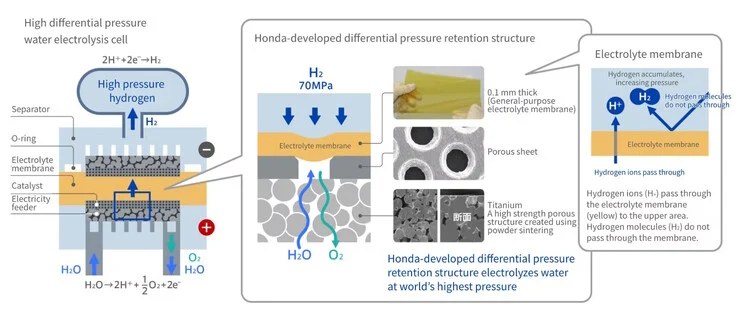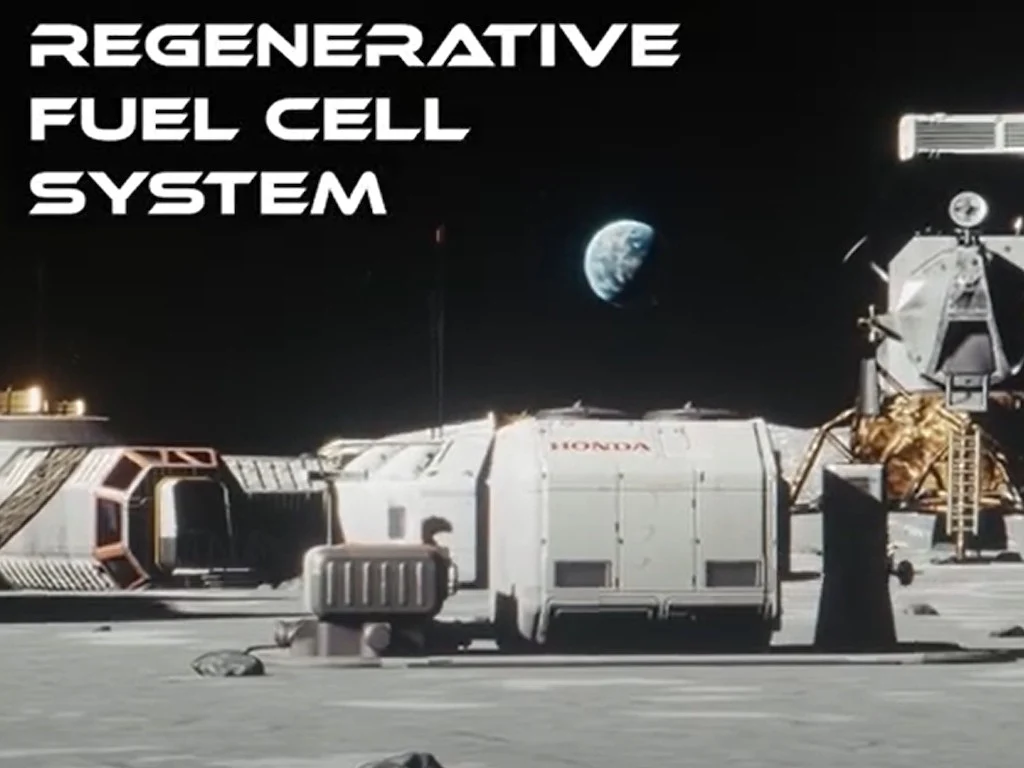Key Takeaways
1. Honda’s Space Development Division is sending a water electrolysis system to the ISS for lunar fuel cell use.
2. The system splits water into hydrogen and oxygen using solar-generated electricity through electrolysis.
3. Hydrogen can be stored for fuel cell applications, while oxygen ensures breathable air for astronauts.
4. The fuel cell system generates electricity at night using stored hydrogen and oxygen, recycling water as a by-product.
5. Honda is collaborating with Sierra Space and Tec-Masters, with a launch date yet to be announced.
Honda’s Space Development Division is gearing up to send its water electrolysis system to the International Space Station (ISS). This innovative system plays a crucial role in the regenerative lunar fuel cell setup, which is designed to produce electricity, hydrogen, and oxygen for astronauts working on the moon.
How It Works
The only things needed for this system are water and electricity. During the day, solar panels on the moon will generate electricity to split water into hydrogen ions through the process called electrolysis. The small H+ ions move through a special one-way electrolyte membrane and then combine on the other side to form hydrogen. This membrane, which is just 0.1 mm thick, is built to handle a pressure of 70 MPa, which is about 700 times that of Earth’s atmosphere.
Collecting and Using Hydrogen
Under these high-pressure conditions, larger H2 molecules can be gathered and stored for use in the fuel cell system or for other applications, like powering lunar vehicles with hydrogen. This electrolysis process also produces oxygen, ensuring that astronauts have enough air to breathe while they’re on the moon.
At night, the fuel cell system utilizes some of the hydrogen and oxygen in a reverse reaction to generate electricity, with water being the only by-product. This water can then be recycled for use the following day, creating a sustainable energy cycle.
Collaboration and Future Plans
Honda is collaborating with Sierra Space and Tec-Masters for this exciting project. However, the specific launch date has not yet been revealed.
For those fascinated by the potential of hydrogen, there is a book available on Amazon that explores its uses. Additionally, for DIY enthusiasts, there’s a guide on Amazon that teaches how to build a solar hydrogen fuel cell system.
Source:
Link




